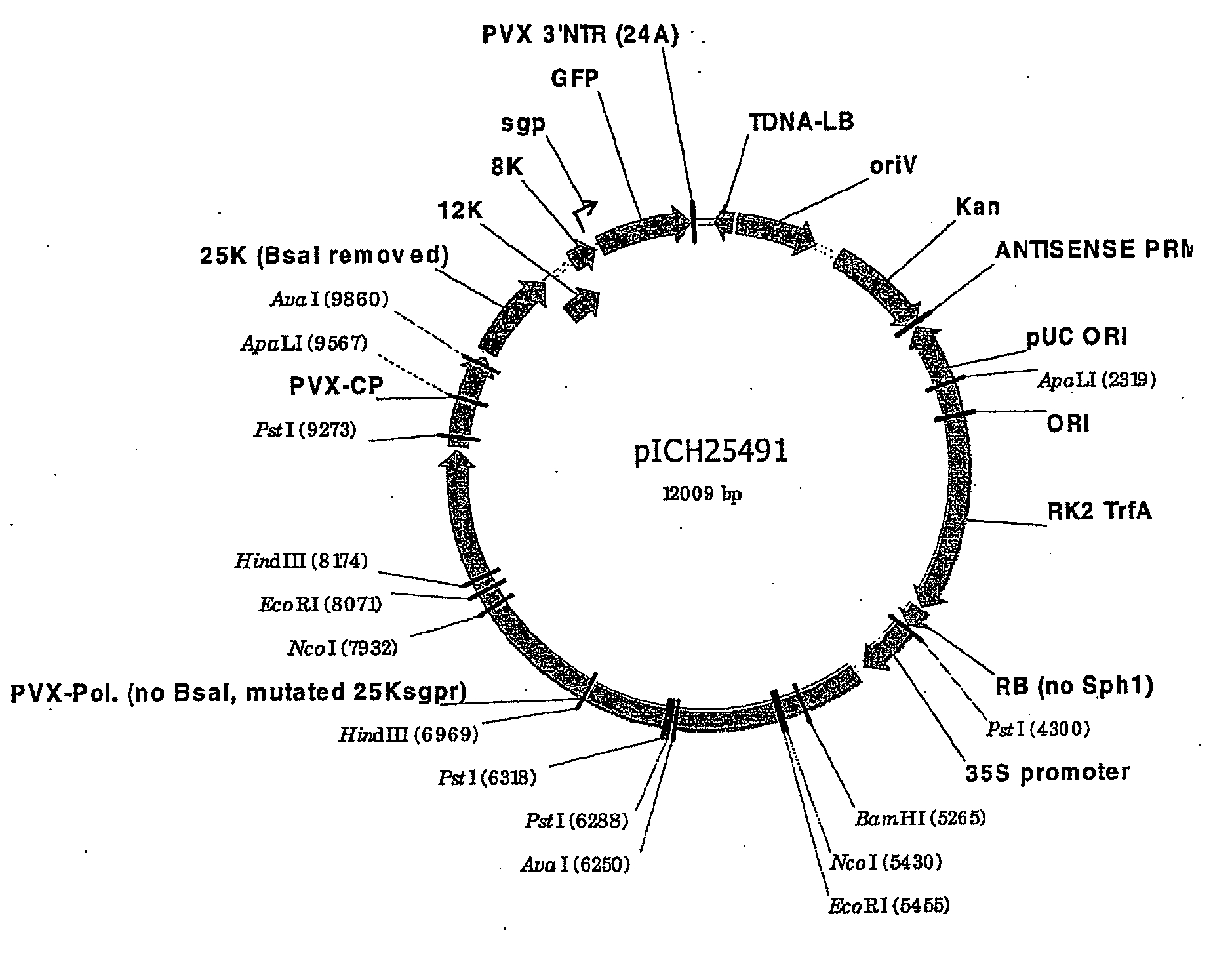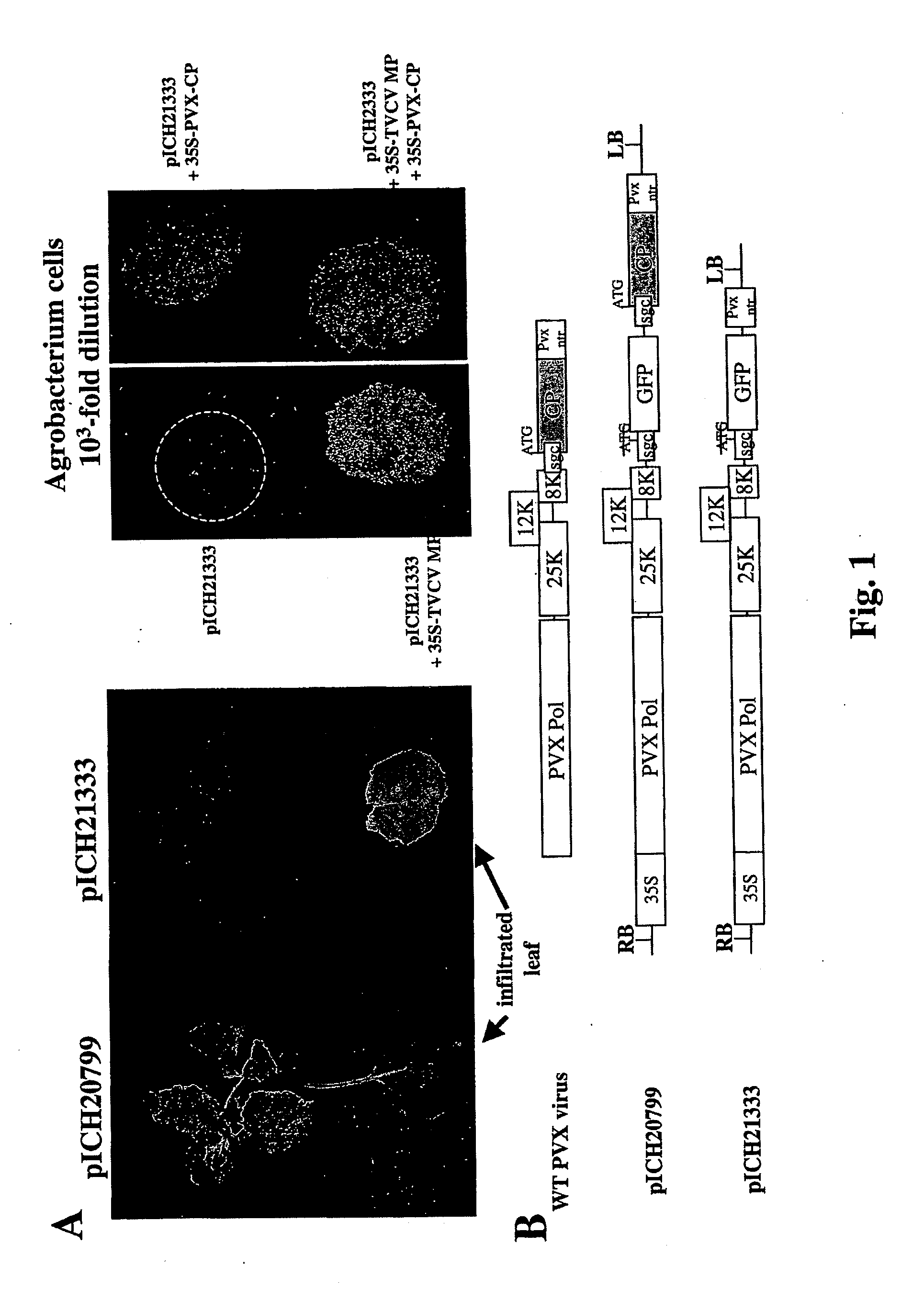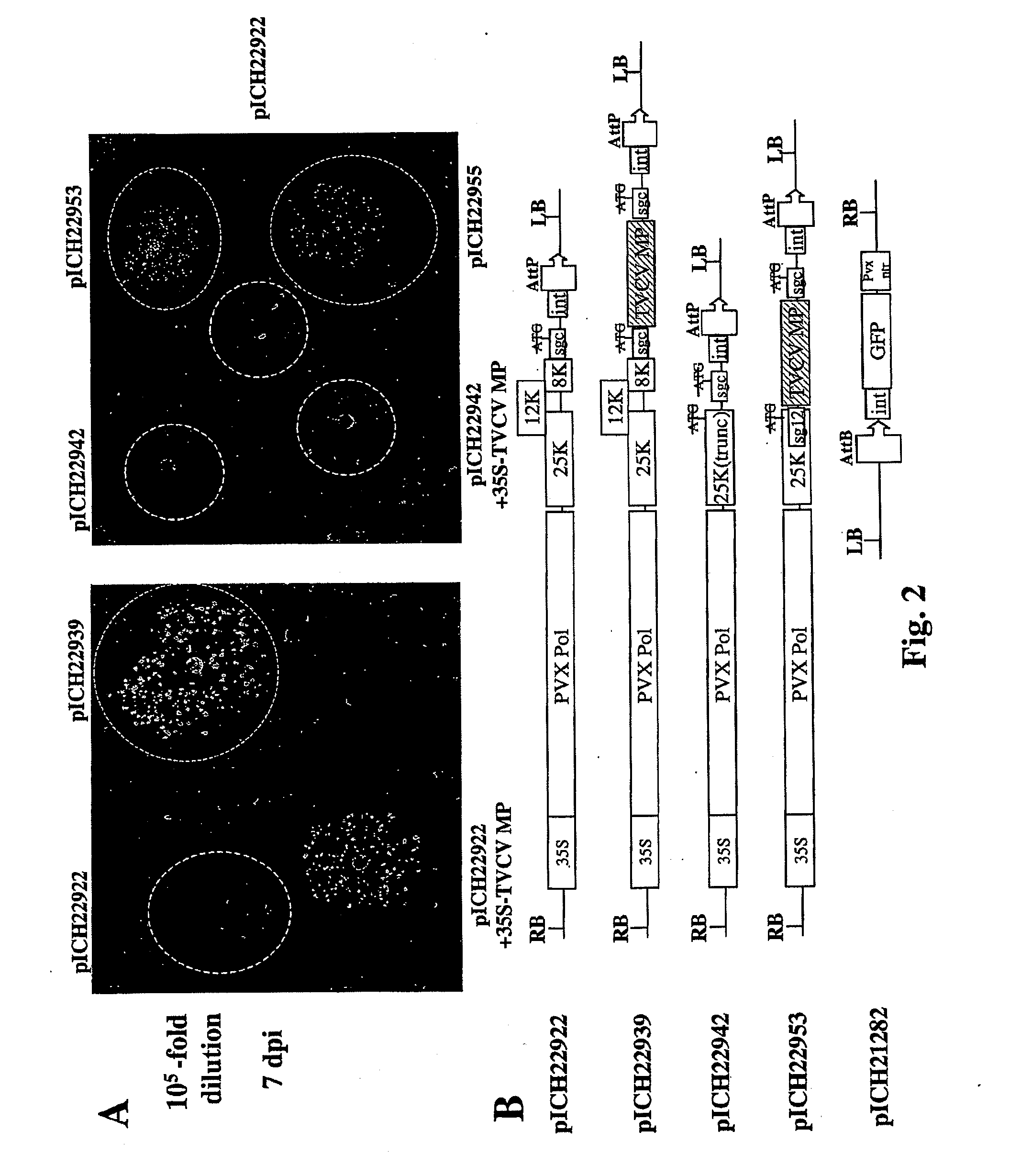Potexvirus-derived replicon
a technology of replicon and potexvirus, applied in the field of potexvirus-derived replicon, can solve the problems of large waste of plant resources, inability to remove the potexvirus-derived viral vectors' coat protein gene without severe loss of protein expression efficiency, and rarely good solutions for engineering plant hosts to provide viral coat protein in trans
- Summary
- Abstract
- Description
- Claims
- Application Information
AI Technical Summary
Benefits of technology
Problems solved by technology
Method used
Image
Examples
example 1
[0089]PVX Constructs Lacking CP Do Not Move from Cell-to-Cell
[0090]A PVX construct containing a GFP gene (pA3151) was obtained from Professor Yuri Dorokhov (Moscow State University, Russia). This construct was made by cloning a NheI-SalI fragment containing the GFP coding sequence into pPVX201 (Baulcombe, D., Chapman, S. & Santa Cruz, S., 1995, Plant J., 7:1045-1053) digested with NheI and SalI, and then subcloning from the resulting construct a Hind3-SacI fragment (containing the entire viral insert and GFP gene) into pBIN19. The viral insert was then subcloned from pA3151 into pICBV52 (a small pBIN19-based KanR binary vector) as a SacI-SphI fragment, resulting in plasmid pICH20799. This construct contains the PVX construct cloned under the control of the 35S promoter (FIG. 1B). The GFP coding sequence is expressed from a duplicated CP subgenomic promoter (sgc), and is located between the triple gene block (TGB) and the CP coding sequence. Since the duplicated subgenomic promoter f...
example 2
[0092]A PVX Replicon with the TVCV MP Gene Cloned Between the TGB and the Gene of Interest is Able to Move from Cell to Cell
[0093]Since TVCV MP is able to provide cell-to-cell movement to PVX replicons that lack PVX CP, the TVCV MP gene was cloned in the PVX construct between the triple gene block and the gene of interest (GFP in this case), under control of a duplicated CP subgenomic promoter. For practical reasons, this construct (pICH22939, FIG. 2B and SEQ ID NO:1) was made as a 5′ provector module which contains the 35S promoter fused to 5′ viral vector sequences but lacks the 3′ part of the construct including the coding sequence of the gene of interest and the PVX 3′ NTR. A recombination site (the Streptomyces phage C31 AttP site) and intron sequences follow the viral construct sequences. A 3′ provector module, pICH21282 FIG. 2B), contains a compatible recombination site (Streptomyces phage C31 AttB recombination site) followed by intron sequences, the GFP gene and the PVX NTR...
example 3
[0096]A PVX Vector with a PVX CP Gene Cloned Between the TGB and the Gene of Interest is Able to Move from Cell to Cell
[0097]A construct similar to pICH22939 but with PVX CP replacing TVCV MP was made. The sequence of this construct is the same as that of the wild type virus from the 5′ end of the virus up to the end of the CP. The CP is then followed by the duplicated CP subgenomic promoter that is used for expression of the gene of interest. Infiltration of this construct, pICH22988 (FIG. 3B), with pICH21282 (FIG. 2B) led to the formation of replicons that moved from cell to cell much faster and that produced brighter GFP fluorescence than replicons produced from pICH22939 (FIG. 3A).
PUM
| Property | Measurement | Unit |
|---|---|---|
| Fraction | aaaaa | aaaaa |
| Fraction | aaaaa | aaaaa |
| Fraction | aaaaa | aaaaa |
Abstract
Description
Claims
Application Information
 Login to View More
Login to View More - R&D
- Intellectual Property
- Life Sciences
- Materials
- Tech Scout
- Unparalleled Data Quality
- Higher Quality Content
- 60% Fewer Hallucinations
Browse by: Latest US Patents, China's latest patents, Technical Efficacy Thesaurus, Application Domain, Technology Topic, Popular Technical Reports.
© 2025 PatSnap. All rights reserved.Legal|Privacy policy|Modern Slavery Act Transparency Statement|Sitemap|About US| Contact US: help@patsnap.com



